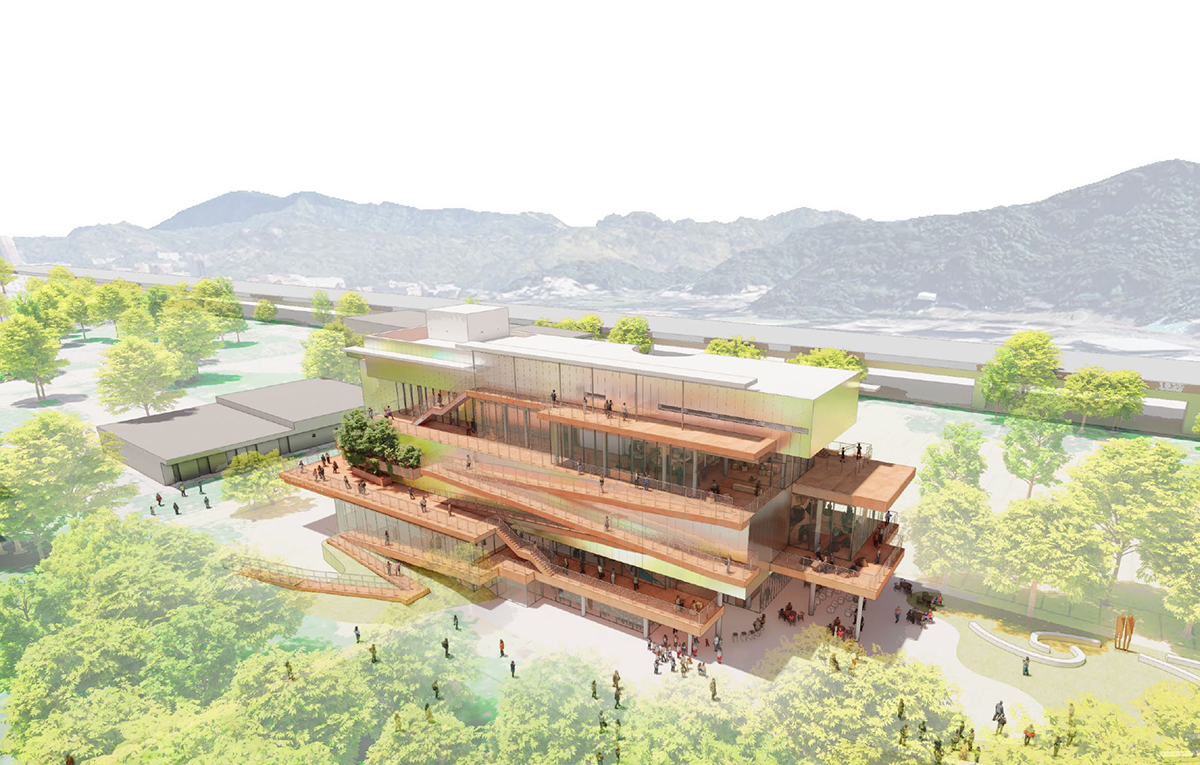
The Centennial Memorial Hall will feature a café on the ground floor and a donor wall at the main entrance, with other floors designed for the following purposes:
• 2F: An open-air corridor overlooking interior activities.
• 3F: Exhibition and exchange space.
• 4F: A circular special exhibition hall and workshop area.
• 5F: Administrative offices.
National Taiwan University (NTU) officially revealed the long-anticipated design of its Centennial Memorial Hall, a cultural and architectural landmark commemorating the university’s 100th anniversary.
The project’s design—jointly created by renowned Japanese architect Akihisa Hirata and Taiwanese architect Hsiang-Lung Huang—won the public competition held on December 29, 2022. Subsequently, design adjustments have been made to accommodate changes in the project scale. After two years of refinement, the revised concept was formally presented by Hirata himself at the NTU University Council Meeting on March 22, 2025, where he shared the architectural vision and design philosophy with attending faculty and student representatives. The presentation sparked lively discussions, with Hirata and NTU administrators addressing questions about the structure’s environmental adaptation, sustainability, and accessibility.
Fusing History, Ecology, and Innovation
Centennial Memorial Hall—also referred to as the NTU Arts and Culture Building—is planned to be a five-story structure with one underground level, and an estimated construction cost of over NT$1 billion. Architect Hirata noted that NTU’s campus features a unique blend of historical legacy and contemporary vitality. His design embraces this dual identity by creating a multi-functional, ecologically integrated space that embodies both tradition and innovation.
The Hall will be the first museum on campus in which a steel structural system is combined with natural materials reflective of NTU’s landscape. It will showcase 100 landmark contributions and achievements made by the university that have shaped both Taiwan and the world. Construction is expected to be completed by October 2028, followed by the building’s formal handover.
Notably, the design team used AI-assisted analysis to process extensive NTU-related data, generating conceptual “fragments” and keywords that symbolize the university’s spirit. These insights informed a highly original exhibition space, uniquely tailored to NTU’s identity. Hirata cited a quote by former NTU President Fu Ssu-Nien—“We dedicate this university to the spirit of the universe”—as a key source of inspiration. “Only within a university can we dare to challenge and innovate at such a level,” Hirata remarked. “This will be a space that transcends traditional design—an architecture that aspires to reflect the spirit of the cosmos.”
Responding to Taiwan’s Climate and Community Needs
Faculty and students raised practical questions about the building’s suitability for Taiwan’s hot, humid climate and frequent typhoons. Issues concerning air conditioning and energy efficiency, bird-safe glass, parking logistics, and universal accessibility were thoroughly discussed. Hirata and the university team assured attendees that these considerations would be integral to the project’s ongoing refinement.
Hirata, a protégé of Pritzker Prize laureate Toyo Ito, is known for integrating human-nature harmony into his architectural works. In recent years, he has participated in several high-profile projects across Taiwan, consistently merging philosophical depth with innovative design.

The building will be located at the intersection of Roosevelt Road Section 4 and Keelung Road Section 4, marking a key gateway into Taipei from the neighboring New Taipei City districts, Yonghe and Xindian.

Japanese architect Akihisa Hirata , protégé of Pritzker Prize laureate Toyo Ito.
